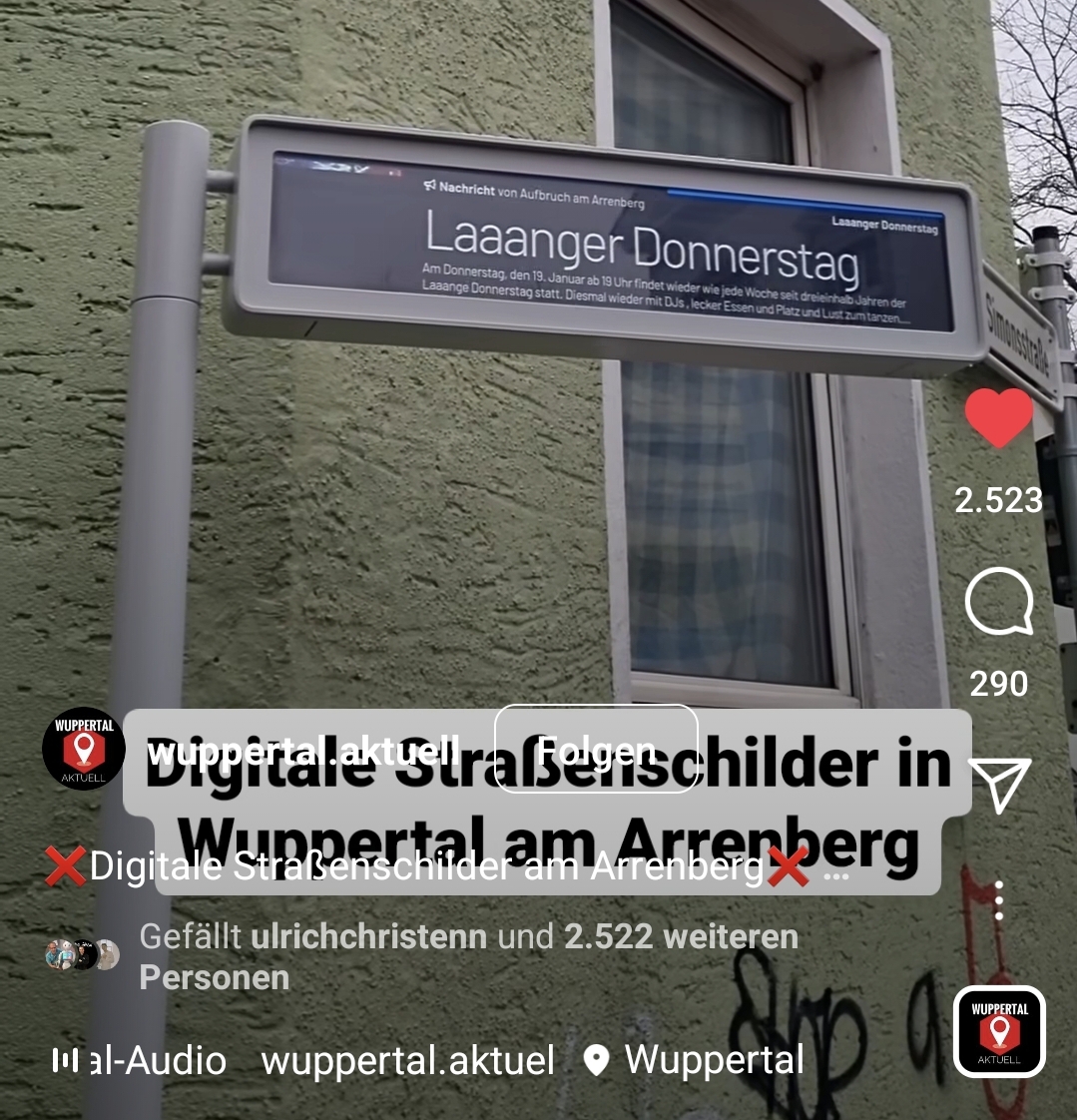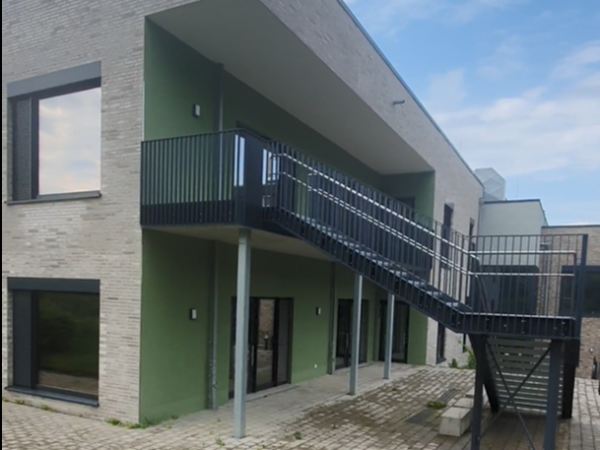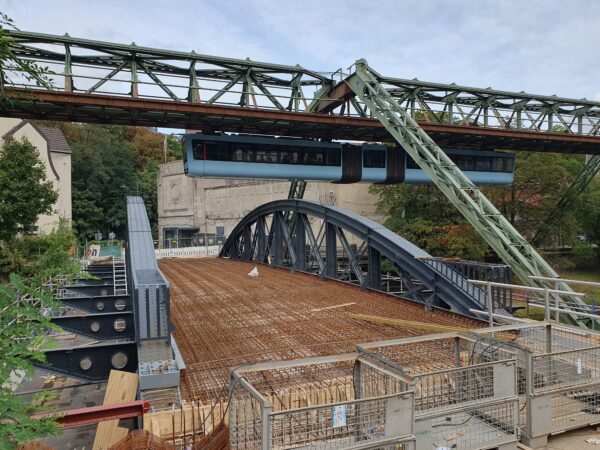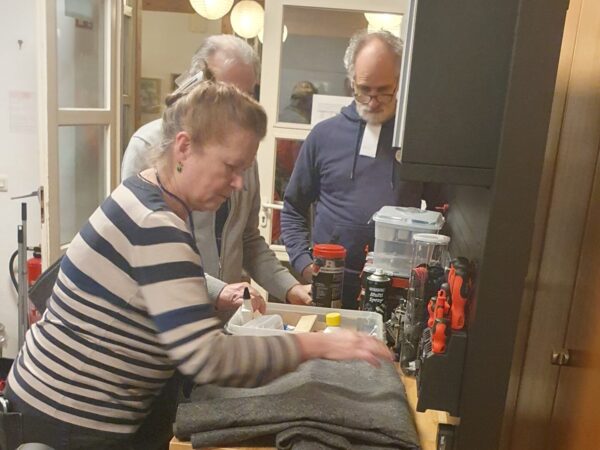Aktuelles am Arrenberg - 31. Januar 2023
Insta-Shitstorm?!
Das Real-Video wurde fast 90.000mal angesehen und kräftig kommentiert. Mehr als 2.500 User haben dem Video ein Herz gegeben. Aber auch einige Hundert haben in ihren Kommentaren die Displays kritisiert und ihren Ärger Luft gemacht. Meist ging es um Steuerverschwendung oder dass man den Straßennamen wegen der Werbung nicht sehen könne. Wofür die Displays eigentlich sind und dass hier kein Steuergeld verbaut wurde, haben da wohl die wenigsten gelesen.
Danke, @WuppeetalAktuell für die Reichweite.



































